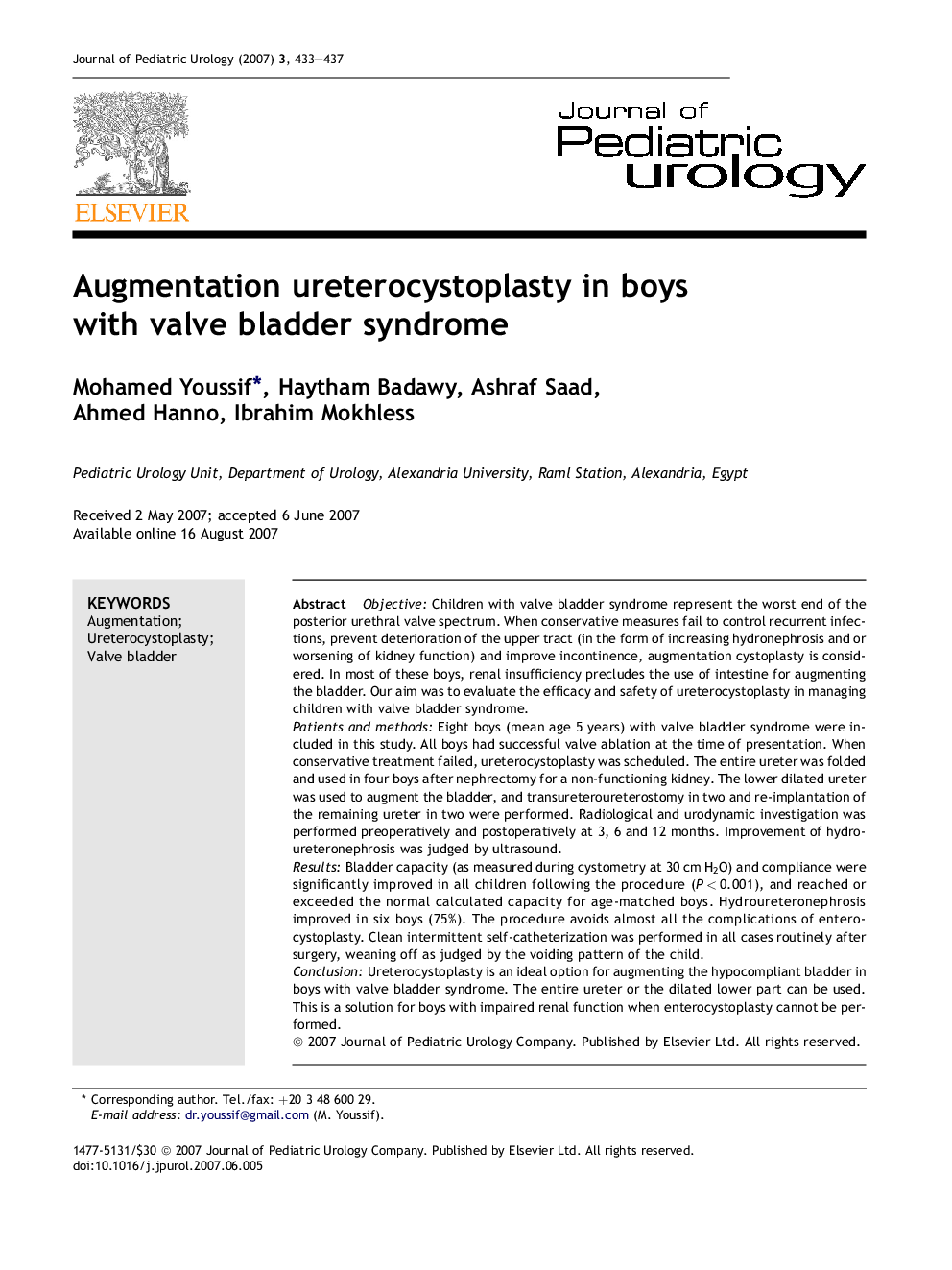| Article ID | Journal | Published Year | Pages | File Type |
|---|---|---|---|---|
| 4163828 | Journal of Pediatric Urology | 2007 | 5 Pages |
ObjectiveChildren with valve bladder syndrome represent the worst end of the posterior urethral valve spectrum. When conservative measures fail to control recurrent infections, prevent deterioration of the upper tract (in the form of increasing hydronephrosis and or worsening of kidney function) and improve incontinence, augmentation cystoplasty is considered. In most of these boys, renal insufficiency precludes the use of intestine for augmenting the bladder. Our aim was to evaluate the efficacy and safety of ureterocystoplasty in managing children with valve bladder syndrome.Patients and methodsEight boys (mean age 5 years) with valve bladder syndrome were included in this study. All boys had successful valve ablation at the time of presentation. When conservative treatment failed, ureterocystoplasty was scheduled. The entire ureter was folded and used in four boys after nephrectomy for a non-functioning kidney. The lower dilated ureter was used to augment the bladder, and transureteroureterostomy in two and re-implantation of the remaining ureter in two were performed. Radiological and urodynamic investigation was performed preoperatively and postoperatively at 3, 6 and 12 months. Improvement of hydroureteronephrosis was judged by ultrasound.ResultsBladder capacity (as measured during cystometry at 30 cm H2O) and compliance were significantly improved in all children following the procedure (P < 0.001), and reached or exceeded the normal calculated capacity for age-matched boys. Hydroureteronephrosis improved in six boys (75%). The procedure avoids almost all the complications of enterocystoplasty. Clean intermittent self-catheterization was performed in all cases routinely after surgery, weaning off as judged by the voiding pattern of the child.ConclusionUreterocystoplasty is an ideal option for augmenting the hypocompliant bladder in boys with valve bladder syndrome. The entire ureter or the dilated lower part can be used. This is a solution for boys with impaired renal function when enterocystoplasty cannot be performed.
